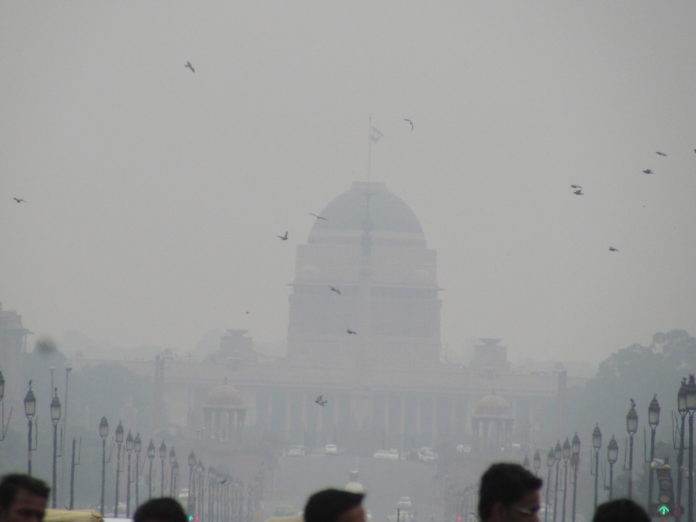New Delhi (NVI): Ending a brief respite of last few days, air quality in Delhi-NCR moved closer to “severe” category today driven by relatively calmer winds, low temperatures and high humidity even as the Government told the Parliament that overall the air pollution has come down in the region in the last three years.
The overall air quality index (AQI) in the national capital region was recorded 355 at 6:30 am with the PM2.5 level being at 191 and PM10 level at 311. However, the Government-run System of Air Quality Forecasting And Research (SAFAR said the relief is expected only on Saturday with an increase in wind speed, which will disperse pollutants faster.
Worsening from yesterday’s “very poor” zone on Thursay, the AQI for Rohini (414), Anand Vihar (422), Nehru Nagar (410), Dwarka Sector 8 (404) and Bawana (407) even entered the ‘severe’ zone, SAFAR data revealed.
Neighbouring Ghaziabad (415), Greater Noida (402), Noida (402) also recorded ‘severe’ pollution levels, while the AQI in Faridabad (391) bordered the ‘severe’ zone.
An AQI between 201 and 300 is considered ‘poor’, 301-400 ‘very poor’ and 401-500 ‘severe’.
According to the India Meteorological Department (IMD), very low wind speed due to a western disturbance and high humidity due to shallow fog in the morning led to the accumulation of pollutants.
“Though the farm fire count is relatively high (1,011) as compared to last week, transport-level winds (easterly) are not favourable for plume intrusion,” it said.
Delhi air pollution has overall come down in last years: Javadekar
Meanwhile, Union Environment Minister Prakash Javadekar yesterday tabled a report on Delhi air pollution in the Upper House of Parliament which said that the national capital’s air quality has improved in the last three years and the number of ‘good’ and ‘moderate’ days has increased.
The tabled continuous Ambient Air Quality Monitoring Stations data also said that there has been an overall improvement in the air quality of Delhi in 2019 (from January-November 19) successively from 2016.
The numbers of ‘good’, ‘satisfactory’ and ‘moderate’ days has increased to 159 in 2018 as compared to 152 in 2017 and 106 in 2016, while the number of ‘poor’, ‘very poor’ and ‘severe’ days has reduced to 206 in 2018 compared to 213 in 2017 and 246 in 2016.
Speaking in Rajya Sabha he said that a comprehensive air plan for Delhi NCR had been developed identifying the timelines for abating and controlling the air pollution.
“In order to abate and control air pollution in Delhi NCR, we have undertaken several initiatives. A high-level task force was constituted under the chairmanship of the Principal Secretary to the Prime Minister. Regular review meetings have been held,” he said.
“A comprehensive air plan for Delhi NCR has been developed identifying the timelines and implementing agencies for actions delineated. Centre has notified a graded response action plan for Delhi NCR for different levels of pollution,” he added.
The environment ministry also launched the National Clean Air Programme (NCAP) in January to tackle the problem of air pollution in a comprehensive manner with targets to achieve 20 to 30 per cent reduction in PM 10 and PM 2.5 concentration. This would be achieved by 2024 keeping 2017 as the base year, he said.
Moreover, over the vehicular emissions, BS VI emission norms would be applicable in the country from April 1, 2020, and this would led to 80 per cent reduction in particulate matter emissions.
-nad








